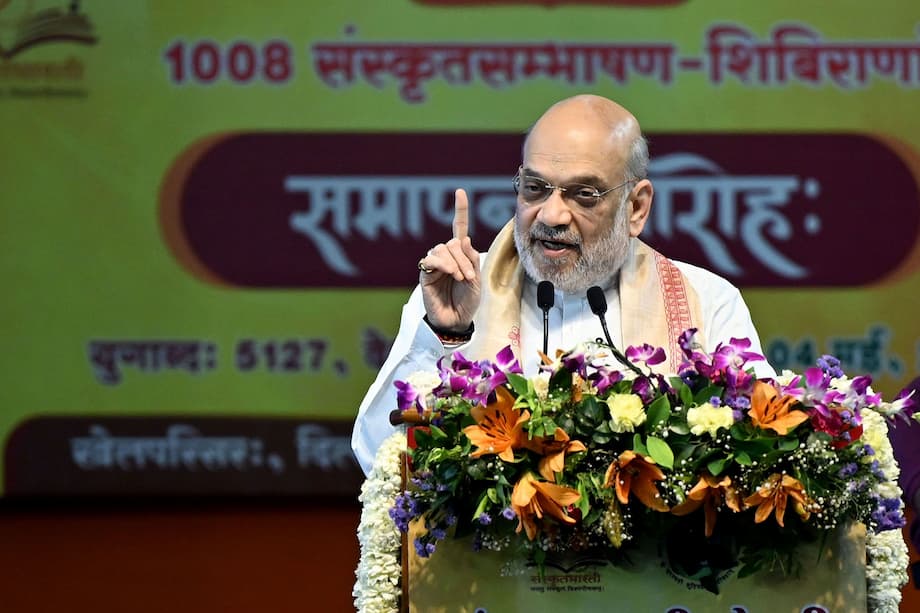India’s Language Wars: BJP’s Challenge to English and the Battle for National Identity
India, a nation of 1.4 billion people and unparalleled linguistic diversity, is once again embroiled in a fierce debate over language, identity, and the future of its youth. At the heart of the controversy is the ruling Bharatiya Janata Party’s (BJP) campaign to diminish the role of English in public life, promote Hindi, and reshape the country’s linguistic landscape. This push has reignited old regional tensions, sparked street protests, and raised fundamental questions about India’s place in the world.
- India’s Language Wars: BJP’s Challenge to English and the Battle for National Identity
- The Colonial Legacy of English in India
- BJP’s Push: Hindi First, English on the Margins
- Regional Resistance: The South Pushes Back
- The Three-Language Formula: Promise and Pitfalls
- English: Bridge to Opportunity or Barrier to Equality?
- Endangered Languages and the Cost of Dominance
- Federalism, Identity, and the Politics of Language
- What’s at Stake: Progress, Pluralism, and India’s Future
- In Summary
For centuries, English has been both a legacy of colonial rule and a ladder to social mobility in India. Now, as the BJP intensifies its efforts to elevate Hindi and regional languages, the nation finds itself at a crossroads: Should English remain a bridge to global opportunity, or is it a colonial relic holding India back from its true cultural identity?
The Colonial Legacy of English in India
When British traders arrived in India in the 1600s, they sought spices and silk but left behind a far more enduring legacy: the English language. Initially a tool of commerce and administration, English became the language of law, education, and privilege under colonial rule. By the time India gained independence in 1947, English was deeply embedded in the country’s elite institutions.
The post-independence leaders faced a daunting challenge: how to unify a nation with hundreds of languages and dialects. Hindi was proposed as the official language, but fierce resistance from non-Hindi-speaking regions meant English would remain as a “link language”—a temporary compromise that has endured for over seven decades. Today, English is one of India’s 22 official languages, spoken by about 10% of the population, while Hindi is the first language for roughly 44%.
BJP’s Push: Hindi First, English on the Margins
Since coming to power in 2014, Prime Minister Narendra Modi and his BJP government have made no secret of their desire to promote Hindi and reduce the dominance of English. Home Minister Amit Shah’s recent declaration that “those who speak English will soon feel ashamed” crystallized the party’s stance and ignited a national debate. Shah argued that “the languages of our country are the jewels of our culture” and that without them, “we cease to be truly Indian.”
The BJP’s policies have included:
- Encouraging government officials to use Hindi in official communication and on social media
- Introducing medical and technical degrees in Hindi in some states
- Replacing English greetings and songs with Hindi equivalents in public ceremonies
- Using “Bharat” instead of “India” on official invitations, such as at the 2023 G20 summit
Supporters see these moves as a long-overdue assertion of cultural authenticity, freeing India from the “colonial mindset.” Critics, however, warn that diminishing English could undermine India’s global competitiveness and deepen social divides.
Medical Education in Hindi: Symbolism and Controversy
One of the most symbolic—and controversial—steps has been the introduction of medical degrees in Hindi. In Madhya Pradesh, government colleges now offer first-year medical courses in Hindi, with other BJP-ruled states considering similar moves. Prime Minister Modi has argued that this will allow students from poorer, non-English-speaking backgrounds to pursue careers in medicine and engineering.
Dr. Rajan Sharma, former head of the Indian Medical Council, expressed skepticism: “Where are the Hindi-speaking teachers to teach medicine? … I am proud of the contribution made by Indian doctors to healthcare globally, thanks to their training in English. The policy will be a failure.”
Supporters counter that if countries like Germany and Japan can teach medicine in their native languages, so can India. Yet, the practical challenges—such as translating complex medical terms and accessing global research—remain formidable.
Regional Resistance: The South Pushes Back
While the BJP’s language policies resonate with many in the Hindi-speaking north, they have provoked fierce resistance in the south and west, where regional languages like Tamil, Telugu, Kannada, and Marathi are central to local identity.
Tamil Nadu: The Epicenter of Opposition
No state has pushed back harder than Tamil Nadu. The state has a long history of resisting Hindi imposition, dating back to the anti-Hindi agitations of the 1930s and 1960s. Today, Tamil Nadu follows a two-language policy—Tamil and English—in its schools, rejecting the central government’s “three-language formula” that would require students to learn Hindi as well.
Deputy Chief Minister Udhayanidhi Stalin warned, “Tamils value love but will not surrender to intimidation. We will not accept the imposition of Hindi or any other language over Tamil.”
The BJP’s recent campaign to promote the three-language policy in Tamil Nadu has escalated tensions. Union Education Minister Dharmendra Pradhan threatened to withhold crucial education funds unless the state complied, prompting accusations of blackmail from Chief Minister M.K. Stalin. The dispute has become a flashpoint in the broader struggle over federalism and regional autonomy in India.
Maharashtra: Marathi Pride Versus Hindi Promotion
In Maharashtra, the BJP-led government’s attempt to make Hindi a compulsory third language in schools sparked a political storm. Opposition parties, including the Congress and regional parties like the Shiv Sena and Maharashtra Navnirman Sena (MNS), accused the BJP of undermining Marathi culture and imposing Hindi by stealth.
Raj Thackeray, MNS chief, stated, “Hindi is not a national language but a state language like any other. Linguistic regionalism is being undermined.”
Facing backlash, the state government withdrew its decision and promised to consult stakeholders before making further changes. The episode highlights the political risks of language policy in a country where linguistic identity is deeply intertwined with regional pride.
The Three-Language Formula: Promise and Pitfalls
India’s New Education Policy (NEP) 2020 revived the three-language formula, which theoretically allows states to choose any two Indian languages and one foreign language (often English) for school instruction. The policy promises flexibility and inclusivity, but in practice, it has fueled fears that Hindi will become the default option, especially in non-Hindi-speaking states.
Critics argue that the policy is less about promoting multilingualism and more about advancing Hindi at the expense of regional languages. In states like Tamil Nadu and West Bengal, the policy is seen as an assault on federalism and local autonomy. The practical challenges are also significant: shortages of qualified teachers, underfunded schools, and the risk of overwhelming students with multiple languages.
Political scientist Samuel Huntington warned that rapid change without institutional support can lead to disorder rather than development. India’s language policy, critics say, risks fracturing rather than unifying the nation.
Moreover, the policy’s implementation often falls short of its promises. In many rural and tribal areas, students are forced to learn in unfamiliar languages, leading to higher dropout rates and poorer learning outcomes. UNESCO research shows that children taught in their first language perform better academically and are more likely to stay in school.
English: Bridge to Opportunity or Barrier to Equality?
For many Indians, English is not just a colonial relic but a passport to upward mobility and global opportunity. Proficiency in English opens doors to higher education, lucrative jobs, and participation in the global economy. India’s booming tech and startup sectors, as well as its role as a hub for international business, owe much to the country’s large pool of English speakers.
Yet, access to English education remains highly unequal. Urban, wealthy, and upper-caste families are far more likely to speak English, while rural and lower-caste communities are often left behind. This has deepened social divides, making English both a symbol of aspiration and a marker of privilege.
Linguist Ayesha Kidwai notes, “English is now an aspiration for many, not just a colonial legacy.”
Some critics argue that the BJP’s anti-English rhetoric risks making English even more exclusive, available only to the elite while the masses are denied access. The private sector has stepped in to fill the gap, but this has only entrenched class divides.
The Global Context: Pragmatism Over Purity
Countries like Germany, Japan, South Korea, and China have embraced English for pragmatic reasons, recognizing its importance in science, technology, and commerce. For India, holding back youth from English in the name of cultural purity could be self-sabotage, undermining the country’s ambitions for global leadership.
Endangered Languages and the Cost of Dominance
While the debate over English and Hindi dominates headlines, India’s indigenous languages are quietly disappearing. UNESCO classifies nearly 200 Indian languages as endangered, and more than 220 have vanished in the past 50 years. The rise of English and Hindi, coupled with rapid urbanization, has marginalized many tribal and regional tongues.
Activists warn that the loss of linguistic diversity is not just a cultural tragedy but a blow to the rights and recognition of minority communities. Language is the first marker of identity, and when it is erased from the classroom and public life, entire cultures risk fading into obscurity.
Federalism, Identity, and the Politics of Language
At its core, the language debate in India is about more than words—it is about power, identity, and the nature of the Indian union. The BJP’s push for Hindi and the marginalization of English are seen by many as part of a broader project to reshape India in line with Hindu nationalist ideals, privileging the majority at the expense of pluralism.
Opposition parties and regional leaders frame their resistance as a defense of federalism and diversity. They argue that language and education policy should be the prerogative of states, not imposed from the center. The controversy over the three-language formula and the withholding of education funds to non-compliant states like Tamil Nadu have only deepened these fault lines.
What’s at Stake: Progress, Pluralism, and India’s Future
The stakes in India’s language wars are high. On one side is the promise of unity, cultural pride, and empowerment through mother-tongue education. On the other is the risk of exclusion, lost opportunity, and the erosion of India’s hard-won pluralism.
Experts and activists argue that the real challenge is not choosing between English and Indian languages, but ensuring that all Indians—regardless of region, class, or caste—have access to quality education in both. English should be a public good, not a privilege for the few. At the same time, regional and indigenous languages must be protected and promoted, not sacrificed on the altar of national unity.
The News Minute editorial argues, “The debate over English is ultimately about equality, dignity, and India’s future—choosing between science and dogma, progress and nostalgia.”
In Summary
- The BJP government is challenging the dominance of English in India, promoting Hindi and regional languages as part of a broader cultural and political project.
- English remains a vital bridge to global opportunity, but access is highly unequal, deepening social divides.
- Regional resistance, especially in Tamil Nadu and Maharashtra, has turned language policy into a flashpoint for federalism and identity politics.
- The three-language formula in the New Education Policy 2020 promises flexibility but is seen by many as a vehicle for Hindi promotion and central control.
- India’s indigenous languages are endangered, with hundreds disappearing amid the rise of English and Hindi.
- The real challenge is to balance unity and diversity, ensuring access to both English and regional languages for all Indians.
- The outcome of India’s language wars will shape not just its classrooms, but its future as a pluralist democracy and global power.




